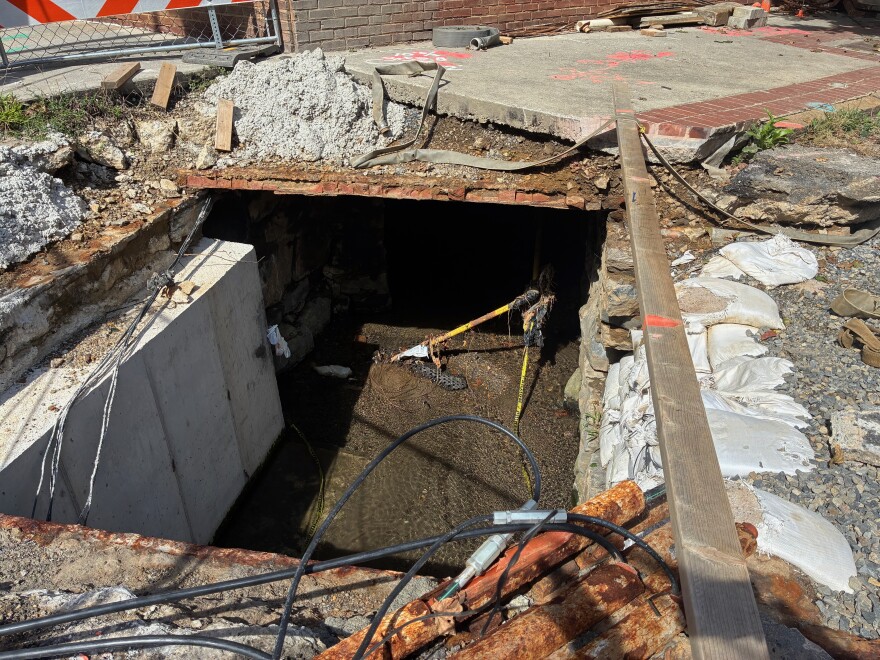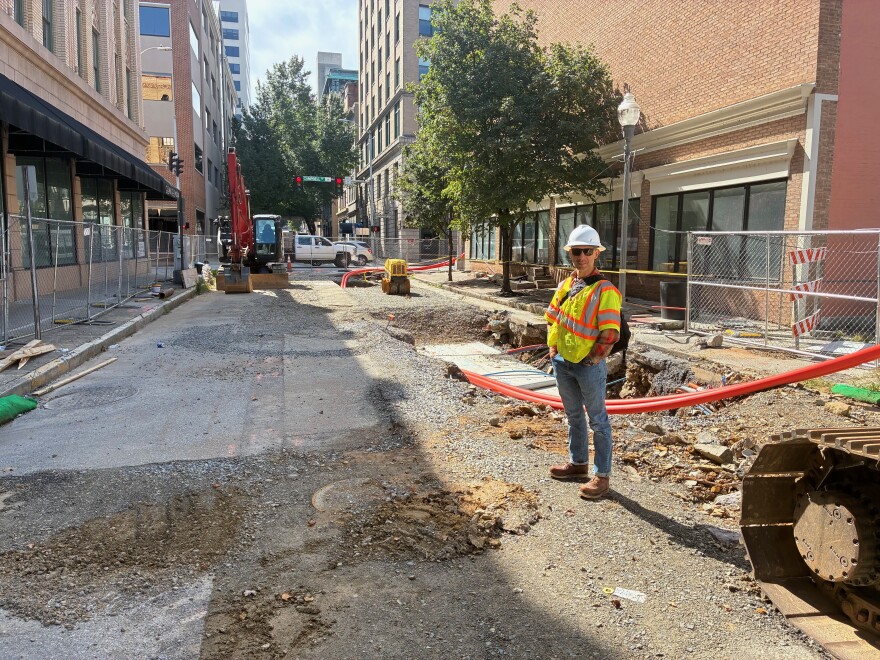Roanoke is a historic stream that flows up First Street between Salem Avenue and Campbell Avenue with a stormwater project that aims to reduce flooding.
Downtown Roanoke is home to businesses and more than 2,500 residents. But before the streets were paved, the area was also home to two creeks - Trout Run and Lick Run. The creeks are still there, running through a series of tunnels and culverts beneath the pavement. That's why downtown still floods on a fairly regular basis.
"When we think about the question of why does downtown flood, one of the main reasons is it's a lowland at the confluence of two streams, and there's an old salt marsh essentially underneath it," says Marcus Aguilar, a civil engineer in the city of Roanoke's stormwater division.
He says the salt marsh and creeks were part of the reason settlers were first attracted to Roanoke. But when the city began to really take off around 1900, they were essentially paved over.
Now they're being excavated, as part of a roughly $3 million project to improve water flow and reduce flooding. The project aims to install bigger culverts and a new water line to improve the flow.
"The general objective is reducing flood risk in downtown, and what that means is trying to the extent that we can to reduce the frequency that flood waters touch buildings and cars and impact people's lives," Aguilar says.
The project has temporarily exposed Trout Run, in which minnows can be seen. Aguilar says he's walked the stream before, which varies from a more natural setting to stark concrete structures. He's seen fish and water snakes there — and even tracks from what may have been a raccoon.

This stormwater project is a first step toward addressing downtown Roanoke's flooding issues. Aguilar says it should reduce flooding by 3 to 5 inches — which doesn't sound like much, but can be a big deal for nearby buildings and cars passing through the area.
The project is probably the largest that can be built downtown, given the sheer number of utility lines underground. Aguilar says, that means the city will need to rethink its approach to resiliency, as climate change results in larger and more frequent flooding events.
The stormwater project at First and Salem should be complete and open to traffic by early December.




